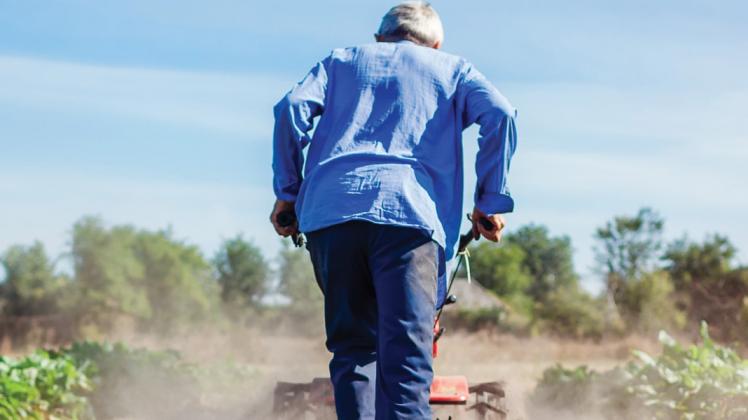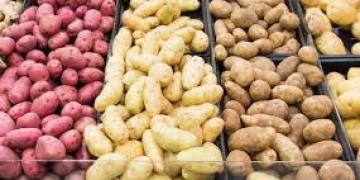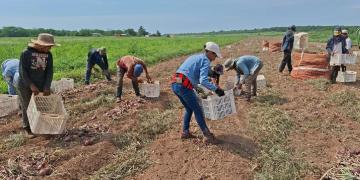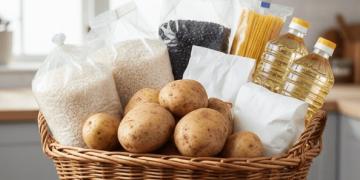Seguridad Alimentaria: Researchers are finding innovative ways to recycle discarded food waste to create prebiotics.
Food waste is a problem of supersized proportions. One third of the food we grow – 1.3 billion tonnes – is wasted. Not only is this shameful when 690 million people go to bed hungry every night, but it also produces an estimated 1.8 billion tonnes

Turning our noses up at leftovers is part of the problem. The priority is to minimise waste, by eating wonky veg, for example, or redistributing surplus food to hungry people, or animals if it is of lesser quality.
But the bulk of wasted food doesn’t even reach our plates. Some food is inedible because it has gone off, become contaminated, or is an inedible by-product of the food industry such as onion skins. These products are then either recycled for fertiliser, burned for energy, or simply go to landfill. But thankfully, there’s appetite for a new solution to address food waste: recycling that retains the value of food molecules so they can still provide nourishment.
Engineers and scientists are working on a new way to extract target carbohydrates needed to make prebiotics; a group of non-digestible nutrients – mostly carbohydrates – that are resistant to the acidic conditions found in the human gut and boost the growth of beneficial bacteria.
Numerous types of these non-digestible carbohydrates are found naturally in fruit and vegetables, such as bananas, apples, asparagus, beans and chickpeas, and even human milk, which is known to be rich in a simple sugar called prebiotic oligosaccharides. This prebiotic has been shown to promote a specific group of beneficial gut microorganisms called bifidobacteria.
Studies show that consuming prebiotics can boost digestive health by improving the absorption of micronutrients such as calcium and supporting the immune system by increasing the number of ‘good’ bacteria in the gut as well as decreasing harmful bacteria. The growth of healthy bacteria that use prebiotics as their source of energy also leads to the production of small molecules called short-chain fatty acids, which enter blood circulation and benefit the immune, cardiovascular, and central nervous system. So, there are lots of benefits to prebiotics.
FOOD INSECURITY
Food for thought
One third of food is wasted. That’s 1.3 billion tonnes.
The cost of this incredible waste is approximately (US) $1tn.
Some 45 per cent of all fruit and vegetables are wasted, 30 per cent of fish and seafood, 30 per cent of cereals, 20 per cent of all dairy products and 20 per cent of all meat and poultry, meaning animals are being needlessly killed.
If food waste were a country, it would be the third highest emitter of greenhouse gases, following the US and China.
UK households waste 4.5 million tonnes of food a year that could have been eaten. That’s about £14bn, or an awful lot of weekly shops.
Some 690 million people around the world go to bed hungry and 270 million people are marching toward starvation, according to the United Nations World Food Programme (WFP).
The problem of food security is set to get worse. We need to grow 70 per cent more food by 2050 to feed our rising global population, which is predicted to reach 10 billion in less than 30 years. Of course, that will involve new and smarter ways to produce food, as well as a focus on reducing waste.
While they exist naturally in foods, they are usually found in small quantities, which is why scientists are exploring ways to make them on a large scale, so they can be used as supplements or to fortify food products.
Currently, experts use enzymes to produce prebiotics on an industrial scale, but they are expensive. Scientists are working on new ways to synthesise nutrients in a more sustainable way, by using enzymes that grow on food waste.
“Using waste as a substrate on which to grow microorganisms and produce particular enzymes within them adds value,” says Dr Afroditi Chatzifragkou, associate professor in sustainable bioprocessing at the University of Reading. “This is because waste like potato peel is no longer considered something that is worth nothing... it becomes a source of nutrients for specific microbial activities and could potentially be used to produce new products with an added value.”
Chatzifragkou and Dr Eleanor Binner, associate professor in chemical engineering at the University of Nottingham, are building on evidence that pectin oligosaccharides, which have been produced from carbohydrates extracted from potato peel, could have a prebiotic effect.
A team including Binner has developed a new scaleable process to extract the target carbohydrates from potato waste, with the aim of testing their prebiotic properties in human trials.
The process uses microwave technology to extract pectins. Pectins are already extracted commercially to be used as food ingredients, but the industrial process uses hot acid to dissolve them from orange peel, for example. “This process isn’t suitable for the specific pectins that we’re interested in, because the neutral sugar side chains that impart prebiotic properties are destroyed by the acidic environment,” says Binner.
Instead, microwaves provide heat. “Microwaves allow us to provide targeted heating throughout the volume of the waste materials, resulting in very fast and even heating. This extracts the thermally sensitive biochemicals before they degrade. Microwaves also allow us to heat selectively, which may enhance the mass transfer within materials,” she explains. The beauty of this is that the process could one day be tailored to suit a specific material, or the product being created.
Another benefit is that because microwaves are electrically powered, renewable energy can be used, making the new process more sustainable. The use of water to dissolve the pectins is also cheaper and more environmentally friendly than using acid and comes with an additional advantage. Chatzifragkou explains: “Using water in this particular process really helps us to reduce the stages involved in downstream processing, meaning the steps that we want to do after the extraction to purify the component of focus.” By omitting chemicals that are otherwise needed to purify target ingredients, the new technique could enable these components to retain their food grade status.
This is the first continuous process able to extract the target materials – pectin oligosaccharides – in large enough quantities to assess their potential in human trials. “If you have a very small lab-scale process you don’t have enough material to test and, in this case, prove that the extracted carbohydrates have a prebiotic effect upon consumption (in vivo),” Binner explains. Thanks to the team developing their continuous process on a bench scale, they can now make “a bag full” of the material instead of a few milligrams.
To scale up further, the team must design a process that’s big enough to accommodate the microwave process. “Unfortunately, you can’t just build a bigger microwave,” Binner says. Instead, the team are exploring different reactor concepts that will enable very fast heating rates to much larger volumes of material. “We need to understand how much selective heating plays a part and how we best exploit that,” she adds. Future trials using the continuous processing facility will help to design the scaled-up system and answer queries about how much power is needed, what the microwave reactor should look like, how different food-based materials and potentially different solvents behave – this will all be required to know when and how to apply microwaves for the valorisation, or upcycling, of food waste.
As well as scaling the equipment needed to make the process workable on an industrial level, there is another big challenge: developing a prebiotic product that’s proven to be beneficial to humans and can compete in a growing market.
Chatzifragkou studies the carbohydrates extracted in the new process by investigating the activities of the gut. “We mix them with human faecal samples and monitor the growth of specific bacteria, which are known to be beneficial for the gut,” she explains. The team is using a simulated gut model system to evaluate the prebiotic effect of pectins, but kilos of product will need to be produced for human trials to be conducted. If or when this is possible, the team will study biomarkers to determine if their product is producing beneficial metabolic effects such as inhibit pathogens in the gut, stimulating the immune system, improving brain function, or reducing serum cholesterol.
“We are interested to find new types of prebiotics that have new associations within the body,” Chatzifragkou says.
It is not just potato waste that’s ripe for exploitation. The team is also experimenting with other food waste such as sugar beet pulp and apple pomace. These different sources could have an impact on the structure they get, which could in turn produce different types of prebiotics. They could even have other health or medicinal effects.
The researchers hope that one day, by-products of industries will be used to make prebiotics and food supplements. “The plan is to create a new supply chain alongside traditional ones, using a material that’s a co-product, meaning it’s not waste anymore, and it’s found a new purpose,” Chatzifragkou explains.
Binner hopes that because microwave processes can be very small and mobile, small machines containing the technology could be rented out to farmers during harvest or times of seasonal food processing. This would mean they could be used for any sort of fruit or vegetable pomace, instead of letting surplus or unsuitable crops go to waste.
Work began in extracting more value from food waste at the turn of the millennium, but this area of research is capturing new imaginations. “Now we have momentum because the public is aware of food waste and the challenges and benefits of the circular economy,” says Binner. “Now is the time to develop viable sustainable processes to reduce waste and improve health.”
Only time will tell whether this new method puts a whole new host of prebiotics on the menu, but these scientists have a gut feeling it will.
WASTE
Mouldy food that is on and off the menu
There could be as many as 300,000 types of mould – microscopic fungi. Who knows how many are in your kitchen!
Most moulds have roots threads that invade the food they live on as well as stalks with spores on the end, which can be transported by air, water or even insects.
Moulds are used to make certain kinds of cheeses. Blue veined cheese such as Roquefort, Gorgonzola, and Stilton are created by the introduction of Penicillium roqueforti spores, while cheeses such as Brie and Camembert have white surface moulds, which are safe to eat. However, in the right conditions, some moulds produce poisonous substances called mycotoxins that can make us sick.
We’ve all been tempted to scrape the mould off food and eat it if we’re running low. But this isn’t always safe, because foods with high moisture contents, like meats, yogurt and soft fruit or bread, can be contaminated below the surface, as can porous products like bread.
According to the USDA, mouldy jam could produce a mycotoxin, so it’s best not to scoop mouldy spots out of a jar.
While it may be safest to ‘waste’ some mouldy food when necessary, some food can be saved. For example, mould can be scrubbed off hard salami and cured hams, and hard cheese can still be eaten if at least 1-inch is cut off around – and under – a mould spot. Similarly, firm fruit and veg can still be eaten if the area around the spot is thrown away.
Fuente: https://eandt.theiet.org/content/articles/2022/06/from-rotting-potatoes-to-nourishing-prebiotics/




